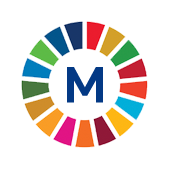 2.2.2 Prevalence of malnutrition among children under 5 years of age, by type (overweight), by sexMetadataPeriod: Every four yearsYear: 2025 |
 2.2.2 Prevalence of malnutrition among children under 5 years of age, by type (overweight), by sexMetadataPeriod: Every four yearsYear: 2025 |
| METADATA |
| Indicator information |
| Definition and methodology |
| Data source type and data collection method |
| Notes |
| ID of global indicator |
| Metadata update |
| Global metadata |
| Indicator information | Top |
| Indicator | |
2.2.2 Prevalence of malnutrition among children under 5 years of age, by type (overweight), by sex | |
| Global indicator name | |
2.2.2 Prevalence of malnutrition (weight for height >+2 or <-2 standard deviation from the median of the WHO Child Growth Standards) among children under 5 years of age, by type (wasting and overweight) | |
| Target | |
2.2 By 2030, end all forms of malnutrition, including achieving, by 2025, the internationally agreed targets on stunting and wasting in children under 5 years of age, and address the nutritional needs of adolescent girls, pregnant and lactating women and older persons | |
| Goal | |
Goal 2. End hunger, achieve food security and improved nutrition and promote sustainable agriculture | |
| Definition and methodology | Top |
| Definition | |
Children up to 5 years whose weight in relation to height deviates by more than 2 standard deviations from the median of the reference population (+2 SD and more) in relation to the overall number of children belonging to this age group (expressed as percentage). Weight for height is a measure of overweightness. Children whose weight for height is more than two standard deviations above the median of the reference population are considered overweighed and are classified as moderately or severely overweighed (+-2 SD and more), while those who are three standard deviations above the median (+3 SD and more) are severely overweighed. | |
| Methodological explanations | |
The Multiple Indicator Cluster Survey (MICS) is a global survey conducted by UNICEF. The MICS is designed to provide statistical insights and internationally comparable data on key social indicators and is moderated to the most vulnerable segments of the population: women, children and the vulnerable and marginalized. The results of this survey constitute one of the most important databases, and for many indicators related to the health, development and education of children, youth and women.
The survey data are:
mother's (care-giver) education level (None/primary education, Secondary education, Higher/high education), type of settlements (Urban, Rural) and wealth index quintiles (Poorest, Second, Middle, Fourth, Richest). | |
| Method of calculation | |
Number of children up to 5 years whose weight in relation to height deviates by more than 2 standard deviations from the median of the reference population (+2 SD and more) is divided by the overall number of children belonging to this age group and then multiplied by 100.
The reference population in MICS IV survey and later is based on new WHO growth standards. For more information please see http://www.who.int/childgrowth/standards/second_set/technical_report_2.pdf
| |
| Unit of measure | |
% | |
| Available disaggregation | |
Gender | |
| Territorial level | |
Republic of Serbia | |
| Data source type and data collection method | Top |
| Data source | |
Multiple Indicator Cluster Survey (MICS) | |
| Periodicity of data collection | |
Every four years | |
| Notes | Top |
| ID of global indicator | Top |
C020202 | |
| Metadata update | Top |
| 27/5/2025 | |
| Global metadata | Top |
https://unstats.un.org/sdgs/metadata/files/Metadata-02-02-02a.pdf | |